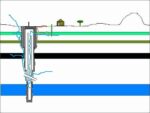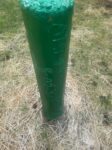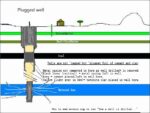- Like
- Digg
- Del
- Tumblr
- VKontakte
- Buffer
- Love This
- Odnoklassniki
- Meneame
- Blogger
- Amazon
- Yahoo Mail
- Gmail
- AOL
- Newsvine
- HackerNews
- Evernote
- MySpace
- Mail.ru
- Viadeo
- Line
- Comments
- Yummly
- SMS
- Viber
- Telegram
- Subscribe
- Skype
- Facebook Messenger
- Kakao
- LiveJournal
- Yammer
- Edgar
- Fintel
- Mix
- Instapaper
- Copy Link
37 posts found, showing 10 per page
Previous Next
Summary.
Slide WVSORO May 5, 2022
So plugging is not capping. Old oil and gas wells need plugged. This needs done properly or serious problems can occur. And it needs State and surface owner and coal owner and mineral owner oversight to be sure that pluggers avoid the temptation to save money and get to the next job. It needs oversight while it is happening so that they do not save money by cutting corners that cannot be seen once the job is finished. More
Slide WVSORO May 5, 2022
So plugging is not capping. Old oil and gas wells need plugged. This needs done properly or serious problems can occur. And it needs State and surface owner and coal owner and mineral owner oversight to be sure that pluggers avoid the temptation to save money and get to the next job. It needs oversight while it is happening so that they do not save money by cutting corners that cannot be seen once the job is finished. More
Bad plug job results.
Slide WVSORO May 5, 2022
So again, numerous problems can arise from improper plugging. This is an illustration of some of them. The methane can leak up into coal formations, into gas and other porous or permeable formations between the producing formation and the coal. More
Slide WVSORO May 5, 2022
So again, numerous problems can arise from improper plugging. This is an illustration of some of them. The methane can leak up into coal formations, into gas and other porous or permeable formations between the producing formation and the coal. More
Bad plug job.
Slide WVSORO May 5, 2022
Again, our purpose #3 for this slide show, is to illustrate the concern is that if a plugging company is not well overseen, it may take shortcuts to save money. This illustration shows that the tubing was pulled, but the production casing was not pulled -- only cut off a few tens of feet below ground. More
Slide WVSORO May 5, 2022
Again, our purpose #3 for this slide show, is to illustrate the concern is that if a plugging company is not well overseen, it may take shortcuts to save money. This illustration shows that the tubing was pulled, but the production casing was not pulled -- only cut off a few tens of feet below ground. More
API number on monument to plugged well.
Slide WVSORO May 5, 2022
The API number required to be on the monument was done with welding in this case. Note the grey cement from teh surface cement job at the bottom of the monument. More
Slide WVSORO May 5, 2022
The API number required to be on the monument was done with welding in this case. Note the grey cement from teh surface cement job at the bottom of the monument. More
Surface reclaimed and mistakes hidden.
Slide WVSORO May 5, 2022
After the well is plugged and the monument set, the area disturbed is to be "reclaimed" to avoid soil erosion and sedimentation. (Surface owners, particularly farmers, may want to insist on certain seed types.) More
Slide WVSORO May 5, 2022
After the well is plugged and the monument set, the area disturbed is to be "reclaimed" to avoid soil erosion and sedimentation. (Surface owners, particularly farmers, may want to insist on certain seed types.) More
Isolating other gas bearing formations.
Slide WVSORO May 5, 2022
This is a different illustration from another source of a well before and after plugging. It does not show a coal seam (like there almost always is in West Virginia) but it does show multiple oil and gas formations that are likely here in West Virginia. More
Slide WVSORO May 5, 2022
This is a different illustration from another source of a well before and after plugging. It does not show a coal seam (like there almost always is in West Virginia) but it does show multiple oil and gas formations that are likely here in West Virginia. More
Plugged well overview drawing.
Slide WVSORO May 5, 2022
This drawing summarizes this simplified plugging explanation. The actual details of the plugging for an individual well will be in the plugging permit application and its approval which are, at least since 1929 or so, on record with the Department of Environmental Protection, Office of Oil and Gas, under the well's API number. More
Slide WVSORO May 5, 2022
This drawing summarizes this simplified plugging explanation. The actual details of the plugging for an individual well will be in the plugging permit application and its approval which are, at least since 1929 or so, on record with the Department of Environmental Protection, Office of Oil and Gas, under the well's API number. More
Cementing to surface.
Slide WVSORO May 5, 2022
Cement is then again placed in the borehole (and inside the surface casing pipe that was placed at the top of the hole and cemented in during drilling) all the way to the surface. At the top it is required that a "monument" be placed at the surface to mark the well's plugged location. Usually this is a four-foot metal pipe stuck in the surface cement job and itself is filled with cement. More
Slide WVSORO May 5, 2022
Cement is then again placed in the borehole (and inside the surface casing pipe that was placed at the top of the hole and cemented in during drilling) all the way to the surface. At the top it is required that a "monument" be placed at the surface to mark the well's plugged location. Usually this is a four-foot metal pipe stuck in the surface cement job and itself is filled with cement. More
One more clay layer.
Slide WVSORO May 5, 2022
Again bentonite clay is placed above the cement bridge that is placed through the coal seam (though in some circumstances cement may be continued from the bottom of the coal all the way to the surface). More
Slide WVSORO May 5, 2022
Again bentonite clay is placed above the cement bridge that is placed through the coal seam (though in some circumstances cement may be continued from the bottom of the coal all the way to the surface). More
Dealing with the coal seam.
Slide WVSORO May 5, 2022
Coal seams also need to be isolated from any gas pressure or invasion. For one thing, coal seams have a form of cracks called cleats that can allow the gas to travel broadly in the horizontal plane and cause problems anywhere the coal seam is breached or even if it comes to the surface Also, increasing the methane in coal seams makes them harder to mine. And finally, and most importantly, it would be very dangerous to miners for a continuous mining machine to cut through a gas well that was not properly plugged and leak poisonous and explosive gas into the coal mine! More
Slide WVSORO May 5, 2022
Coal seams also need to be isolated from any gas pressure or invasion. For one thing, coal seams have a form of cracks called cleats that can allow the gas to travel broadly in the horizontal plane and cause problems anywhere the coal seam is breached or even if it comes to the surface Also, increasing the methane in coal seams makes them harder to mine. And finally, and most importantly, it would be very dangerous to miners for a continuous mining machine to cut through a gas well that was not properly plugged and leak poisonous and explosive gas into the coal mine! More
Previous Next

